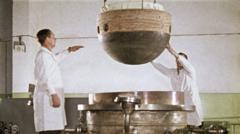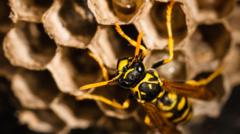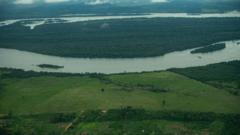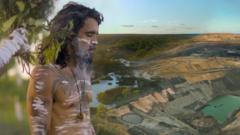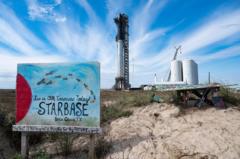The European Space Agency (ESA) indicated that part of the Soviet-era spacecraft, Kosmos 482, has likely re-entered the Earth's atmosphere after being in orbit for more than 50 years. Launched in 1972 on a mission to Venus, Kosmos 482 never successfully made it beyond Earth's gravitational influence, instead splitting into four pieces that have been circling the planet. According to the EU Space Surveillance and Tracking centre (SST), one fragment—thought to be the lander—“most likely” re-entered the atmosphere at around 06:16 GMT (07:16 BST) on Saturday, although it remains uncertain whether the object crashed to the ground or burned up in the atmosphere.
There is also ambiguity regarding the object's exact re-entry location. Experts suggest that, given that 70% of Earth’s surface is ocean, it is improbable the spacecraft caused significant damage. Stijn Lemmens, a senior analyst at ESA, noted, “It's much more likely that you win the lottery than that you get impacted by this piece of space debris.”
Designed to withstand the harsh conditions of Venus, Kosmos 482's lander capsule is equipped with a robust heat shield, increasing the chances of it surviving re-entry. However, experts believe that the parachute system—initially meant to decelerate the descent toward Venus—may have deteriorated over five decades in space.
Lemmens explained that re-entries of human-made objects into Earth's atmosphere are relatively common, occurring weekly for large spacecraft and daily for smaller ones. Historical examples include China's Long March 5B booster, which re-entered over the Indian Ocean in 2022, and the Tiangong-1 space station, which largely burned up in the Pacific in 2018.
International space agencies are closely monitoring the situation regarding Kosmos 482's remnants. Lemmens emphasized the need for future spacecraft to be engineered for safe orbit removal, ideally allowing for controlled re-entry. This approach would enable accurate landing predictions, mitigate risks of debris impacting populated areas, and help address the environmental implications associated with space debris.
There is also ambiguity regarding the object's exact re-entry location. Experts suggest that, given that 70% of Earth’s surface is ocean, it is improbable the spacecraft caused significant damage. Stijn Lemmens, a senior analyst at ESA, noted, “It's much more likely that you win the lottery than that you get impacted by this piece of space debris.”
Designed to withstand the harsh conditions of Venus, Kosmos 482's lander capsule is equipped with a robust heat shield, increasing the chances of it surviving re-entry. However, experts believe that the parachute system—initially meant to decelerate the descent toward Venus—may have deteriorated over five decades in space.
Lemmens explained that re-entries of human-made objects into Earth's atmosphere are relatively common, occurring weekly for large spacecraft and daily for smaller ones. Historical examples include China's Long March 5B booster, which re-entered over the Indian Ocean in 2022, and the Tiangong-1 space station, which largely burned up in the Pacific in 2018.
International space agencies are closely monitoring the situation regarding Kosmos 482's remnants. Lemmens emphasized the need for future spacecraft to be engineered for safe orbit removal, ideally allowing for controlled re-entry. This approach would enable accurate landing predictions, mitigate risks of debris impacting populated areas, and help address the environmental implications associated with space debris.

